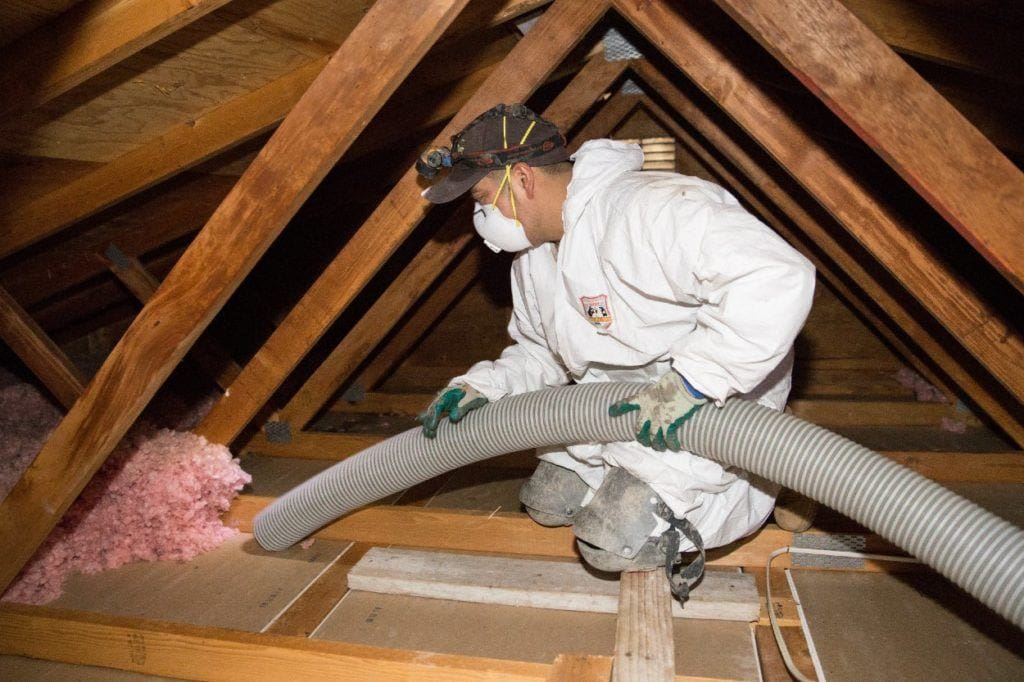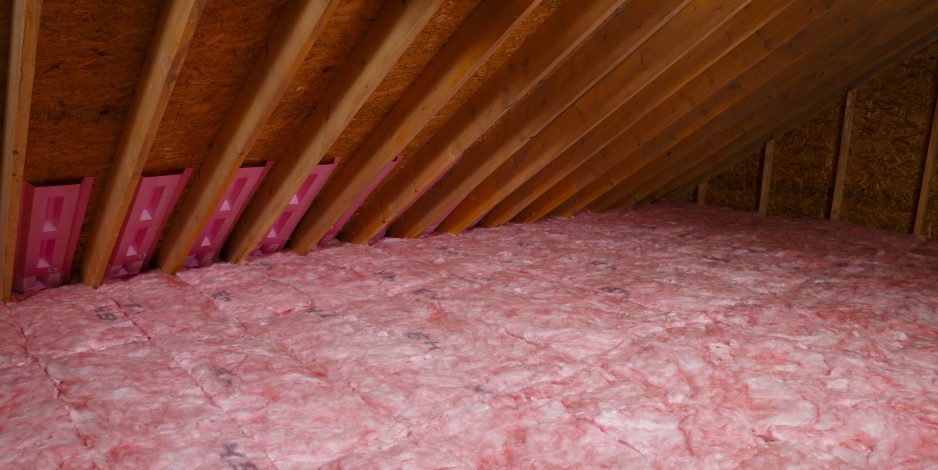Discover the Different Sorts Of Attic Insulation and Their Special Advantages for Your Home's Energy Effectiveness

Fiberglass Insulation
Fiberglass insulation is one of the most frequently used materials for attic room insulation because of its superb thermal performance and cost-effectiveness. Made up of small glass fibers, this product properly traps air, producing a protecting barrier that aids keep regular interior temperature levels. Its high R-value per inch makes it especially efficient at standing up to warm transfer, which is important for energy conservation in homes.
Installation of fiberglass insulation is relatively straightforward, commonly offered in batts or loose-fill kinds, fitting various attic room setups. Furthermore, it is resistant and non-combustible to wetness, reducing the threat of mold growth. This toughness adds to its durability, making fiberglass a feasible long-lasting financial investment for house owners.
Furthermore, fiberglass insulation is typically produced from recycled products, which boosts its eco-friendliness. The material can likewise add to soundproofing, decreasing sound transfer between areas. While it is necessary to use safety gear during installation to stay clear of irritability from the fibers, the overall advantages of fiberglass insulation, including power cost savings and environmental factors to consider, make it a prominent choice for improving attic efficiency and promoting a comfortable living atmosphere.
Spray Foam Insulation
Spray foam insulation is a highly efficient choice for attic insulation, known for its exceptional air sealing and thermal performance. This ingenious insulation material is made up of a mixture of isocyanate and polyol resin, which, when integrated, broadens rapidly to fill up spaces and cavities in the attic space. Its ability to follow various surfaces guarantees a continual obstacle versus air leakages, substantially lowering warmth loss throughout colder months and warmth gain during warmer seasons.
One of the crucial benefits of spray foam insulation is its high R-value per inch, which suggests it gives excellent thermal resistance in a reasonably thin application. This is specifically helpful in attic rooms where area is commonly minimal. Furthermore, spray foam can aid lessen wetness buildup, minimizing the threat of mold and mildew and mold growth, which can be harmful to both the framework and indoor air high quality.
While the first cost of spray foam insulation may be higher than standard options, its long-term energy savings, coupled with enhanced comfort and improved home value, make it a rewarding financial investment for house owners looking for boosted power effectiveness. Attic Insulation DFW. In general, spray foam insulation stands out as an efficient solution for enhancing attic room insulation
Cellulose Insulation

Cellulose insulation is a preferred choice for attic room insulation, mostly composed of recycled paper products treated with fire retardants. This eco-friendly option is known for its exceptional thermal efficiency, efficiently lowering warm transfer in both summer season and winter season. The dense make-up of cellulose enables it to load spaces and voids in attic areas, offering a seamless barrier versus air leakages.
Among the considerable advantages of cellulose insulation is its ability to resist mold and pests, owing to the fire resistant treatments made use of throughout production. In addition, it boasts a high R-value per inch, which equates right into remarkable power efficiency. Homeowners can expect lower home heating and air conditioning expenses as a result of visit this web-site enhanced insulation.
Installment is generally achieved with blowing loosened cellulose right into the desired area, permitting a reliable and quick process. This method likewise reduces interruption to the existing structure. Cellulose insulation has a fairly low environmental influence, as its manufacturing procedure utilizes recycled materials, contributing to sustainable structure practices.
Rock Wool Insulation
Among the various options for attic room insulation, rock woollen, likewise called mineral wool, attracts attention because of its outstanding thermal and acoustic performance. Made from all-natural or recycled products, rock wool is developed by thawing rock and rotating it right into fibers, causing an item that uses outstanding insulation residential or commercial properties.
Among the considerable benefits of rock wool insulation is its high R-value, which suggests its effectiveness in resisting heat flow. This particular not just boosts energy performance however additionally adds to keeping a comfy interior temperature level year-round. In addition, rock woollen is inherently fireproof, making it a safer option for homes as it can endure high temperatures without melting or releasing poisonous fumes.
Furthermore, rock woollen insulation succeeds in soundproofing capabilities, properly decreasing noise transmission between areas and from outdoors sources. This makes it an excellent choice for house owners looking for a tranquil living atmosphere. In addition, rock woollen is moisture-resistant, helping to avoid mold and mildew development and maintaining the structural stability of the attic space. In general, rock wool insulation offers a detailed remedy for improving energy efficiency, safety and security, and convenience in domestic setups.
Radiant Obstacle Insulation
Glowing obstacle insulation acts as a reliable solution for reducing heat transfer in attics, specifically in warmer climates. This type of insulation jobs by mirroring convected heat far from living areas, consequently reducing the quantity of warmth that enters a home throughout heat - Attic Insulation DFW. Usually made up of an extremely reflective product, such as aluminum foil, glowing barriers are installed in attics, dealing with the roofing, where they can obstruct incoming warmth from the sunlight
The key benefit of radiant barrier insulation is its capability to lower air conditioning costs. By mirroring warm instead than absorbing it, radiant barriers can help maintain an extra stable indoor temperature level, decreasing the workload on a/c systems. This effectiveness converts right into reduced power expenses and boosted comfort for house owners.
In addition to power financial savings, glowing obstacles can likewise add to boosted interior air quality. By lowering warmth buildup, they help reduce moisture degrees, which can avoid mold development and enhance overall air circulation. When installed appropriately, glowing obstacle insulation can be an indispensable addition Get More Info to any kind of energy-efficient home, making it a worthy consideration for homeowners looking to improve this website their attic insulation approach.
Verdict
In final thought, recognizing the different types of attic insulation-- fiberglass, spray foam, cellulose, rock wool, and glowing barriers-- enables property owners to make educated choices relating to power effectiveness. By choosing the appropriate insulation material, significant decreases in energy costs can be accomplished, along with improvements in interior comfort.

In final thought, comprehending the different types of attic room insulation-- fiberglass, spray foam, cellulose, rock woollen, and glowing barriers-- makes it possible for home owners to make enlightened decisions relating to energy efficiency.